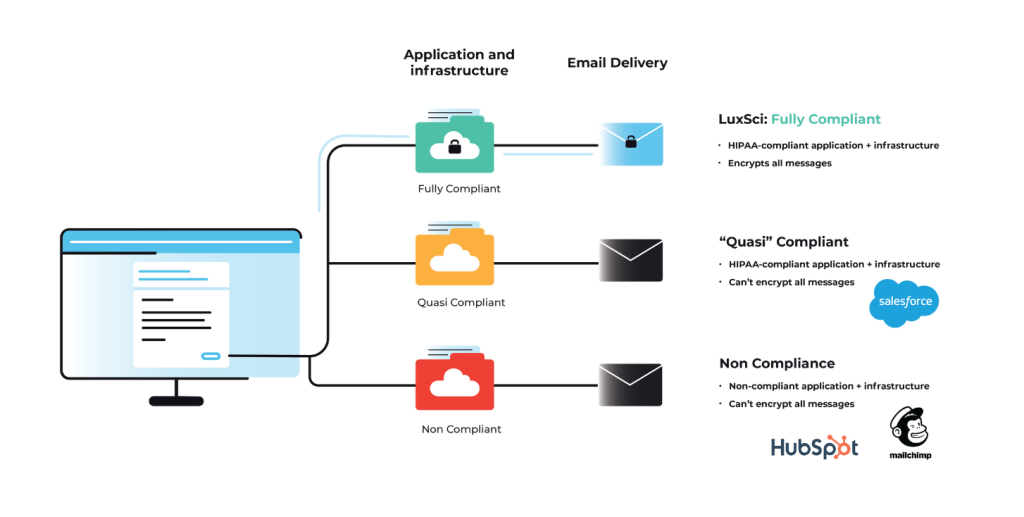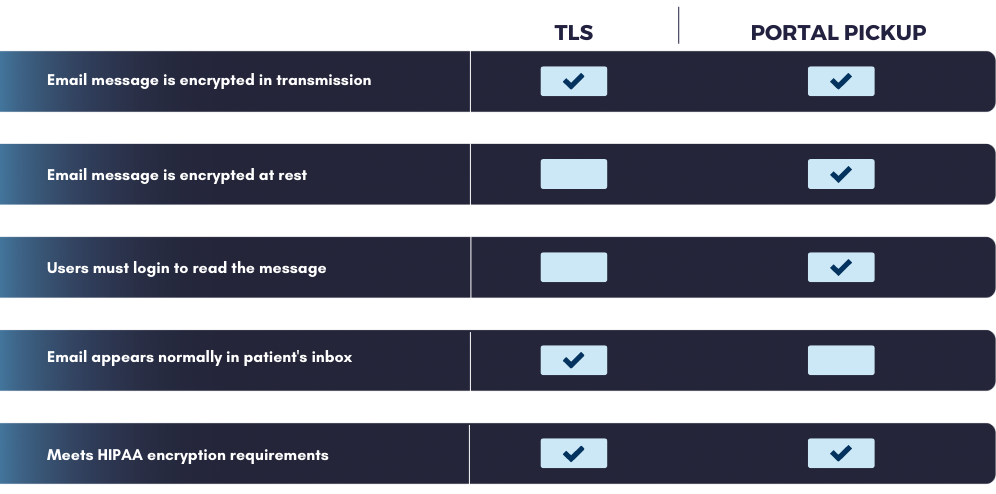A HIPAA secure email is a specialized communication system that protects protected health information during electronic transmission through encryption, access controls, audit logging, and other security features required for regulatory compliance. HIPAA secure email platforms enable healthcare organizations to send sensitive patient information while meeting privacy and security standards established by federal healthcare regulations. Healthcare providers, payers, and suppliers use HIPAA secure email to communicate with patients, business partners, and other healthcare organizations without risking privacy violations or security breaches. Understanding what makes HIPAA secure email different from standard email helps organizations select appropriate communication tools and maintain compliance with healthcare privacy regulations.
Core Security Features of HIPAA Secure Email
HIPAA secure email systems include end-to-end encryption that transforms readable messages into coded format during transmission and storage. This encryption ensures that only authorized recipients with proper decryption keys can access message content and attachments. Transport Layer Security protocols protect email communications during transmission between servers, while message-level encryption secures content even when stored on email servers. Multi-factor authentication verifies user identities before granting access to email systems, requiring additional verification beyond standard passwords. Access controls limit which users can send emails to external recipients and specify what types of information can be included in different message categories. Automatic session timeouts prevent unauthorized access when users leave workstations unattended, while secure password requirements protect user accounts from unauthorized access.
Administrative Controls and User Management
HIPAA secure email platforms provide centralized administration tools that allow IT teams to manage user accounts, configure security policies, and monitor compliance across the organization. Role-based permissions ensure that staff members can only access email functions appropriate to their job responsibilities and organizational roles. User provisioning and deprovisioning processes control access to email systems when staff members join or leave the organization. Policy enforcement mechanisms automatically apply security settings based on message content, recipient types, and organizational rules. Administrative dashboards provide real-time visibility into email security metrics, user activity patterns, and potential policy violations. Centralized logging captures all administrative activities, creating audit trails that demonstrate compliance with regulatory requirements and organizational policies.
Audit and Compliance Tracking Capabilities
Comprehensive audit logging tracks all activities within HIPAA secure email systems, creating detailed records of message transmission, recipient access, and user behavior patterns. These logs include information about who sent messages, when they were transmitted, what attachments were included, and how recipients accessed the content. Audit trails help organizations demonstrate compliance during regulatory reviews and investigate potential security incidents. Log retention policies ensure that audit information remains available for required periods while protecting stored data from unauthorized modification or deletion. Automated reporting features generate compliance reports and alert administrators to unusual email patterns or potential security concerns. Regular audit log reviews help identify training needs and process improvements for email security practices across the organization.
Integration with Healthcare Systems and Workflows
HIPAA secure email solutions integrate with electronic health record systems, practice management platforms, and other healthcare applications to streamline communication workflows. These integrations allow users to send secure messages directly from patient records or billing systems without switching between multiple applications. Automated triggers generate secure email notifications for appointment reminders, lab results, billing communications, and other routine patient interactions. Application programming interfaces enable custom integrations with specialized healthcare software used by different types of organizations. Single sign-on capabilities allow users to access email functions using their existing healthcare system credentials, reducing password management burden and improving user experience. Integration features help maintain productivity while ensuring that all communications involving protected health information remain secure.
Patient Communication and External Messaging
HIPAA secure email platforms include patient portal functionality that enables secure two-way communication between healthcare organizations and their patients. Patients can access secure portals to read messages, respond to communications, and download documents without requiring special software installations. Portal notifications alert patients when new messages arrive while maintaining privacy protections throughout the communication process. External messaging capabilities allow secure communication with business partners, referring physicians, and other healthcare organizations that may use different email systems. Message delivery confirmation and read receipts provide verification that important communications reached intended recipients and were accessed appropriately. Secure message forwarding ensures that communications can be shared with authorized parties while maintaining encryption and audit trail integrity.
Implementation and Deployment Considerations
Healthcare organizations implementing HIPAA secure email need to consider data migration from existing email systems, staff training requirements, and integration with current technology infrastructure. Planning processes should include security risk assessments, workflow analysis, and stakeholder input to ensure selected solutions meet organizational communication needs. Pilot deployments allow organizations to test functionality and identify potential issues before full implementation across all departments. Change management strategies help staff adapt to new email security procedures and software interfaces while maintaining productivity and patient care quality. Technical support during implementation ensures that integration challenges are resolved quickly and security configurations meet organizational requirements. Post-deployment monitoring verifies that HIPAA secure email systems perform as expected and continue meeting compliance obligations as organizational needs change over time.













